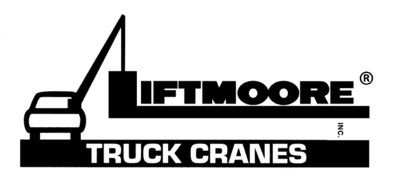FAQ: Crane Specifications
Correctly Specifying a Crane
The three most important factors that need to be known.
1. How much weight will be lifted?
2. How far out from the center of rotation is the load?
3. How often will the lift be made?
Maximum Capacity
Advertised maximum capacity is a statement of the maximum lift capacity of the crane. Liftmoore does not recommend purchasing a crane for use at its maximum lifting weight. A cranes capacity at a particular load radius is determined by its moment rating. Understanding this is essential to getting you the crane you
need.
Moment Rating
Moment rating is a mathematical equation determined by the WEIGHT times the LOAD RADIUS.
Load Radius
This is a measurement from the center of the crane's rotation axis to the center of the load on a horizontal plane.
Weight
The amount of weight to be lifted, includes all rigging used, including the travel block any chains or slings and the hook.
Example of moment rating calculations
A crane with a max lift capacity of 10,000 lbs. with a 72,000 ft. lb. moment rating
72,000 ft.- lbs. divided by 10,000 lbs. equals 7.2 ft. this is the maximum load radius with this load.
At a 12 ft. radius the maximum load is 72,000 divided by 12 ft. equals 6,000 lbs.
At a 20 ft. radius the maximum load is 72,000 divided by 20 ft. equals 3,600 lbs.


Note: The rapid decline in capacity as load radius increases.
Always consider the size of the object and that the crane is mounted on a truck. The distance to the edge of the truck must be included in the load radius.
The above holds true no matter the Manufacturer.
A cranes lifting capacity is based on its moment rating.
Rotation
Many crane manufacturers claim to have 360 degree rotation, however, the rotation may be limited at 375 or 400 degrees at which point the rotation will stop and must be reversed. This limitation must be considered when positioning the truck to perform the work at hand. Liftmoore cranes typically have unlimited rotation. There is either an electric or electric/hydraulic swivel that allows this important feature. As a result there is no limitation by mechanical or electrical stop on the crane's rotation.
Duty Cycle
12V DC powered electric cranes have a limited duty cycle as per S.A.E. J706 (section 6.2). Duty cycle limitations occur because of heat buildup in electric motors (thermodynamics) and the fact that batteries lose their charge, limiting available battery capacity, as they output power to run electric motors. Exceeding the duty cycle constraints and over heating the motor is the #1 cause of DC Motor failure. For longer duty cycles a hydraulic powered crane is required. To learn more about the differences between DC powered and Hydraulic, click here.
Batteries
All 12V DC powered cranes will benefit by having the largest battery mounted as close to the crane as possible. Utilization of additional batteries will extend Motor and Solenoid life. The two batteries under the hood of a diesel engine truck are NOT adequate to power an electric crane. The DC voltage line loss increases dramatically as the length of wire is increased and the voltage at the crane can only be maintained with an additional battery near the crane. Liftmoore recommends that all electric cranes be installed with an auxiliary battery. An auxiliary battery is required for cranes with a maximum capacity of 2001 lbs or larger.
Power Disconnect
Turning off power to the crane will increase the life of its electrical components. Electrolysis causes corrosion which will reduce component life and can cause intermittent electrical problems. All Liftmoore cranes are supplied with a master disconnect switch or a Mecon quick disconnect for disconnecting the crane from its electrical power source. A toggle switch is provided to turn off the power on hydraulic cranes.
